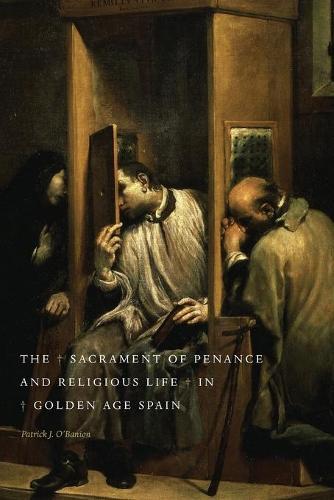Overview
The Sacrament of Penance and Religious Life in Golden Age Spain explores the practice of sacramental confession in Spain between roughly 1500 and 1700. One of the most significant points of contact between the laity and ecclesiastical hierarchy, confession lay at the heart of attempts to bring religious reformation to bear upon the lives of early modern Spaniards. Rigid episcopal legislation, royal decrees, and a barrage of prescriptive literature lead many scholars to construct the sacrament fundamentally as an instrument of social control foisted upon powerless laypeople. Drawing upon a wide range of early printed and archival materials, this book considers confession as both a top-down and a bottom-up phenomenon. Rather than relying solely upon prescriptive and didactic literature, it considers evidence that describes how the people of early modern Spain experienced confession, offering a rich portrayal of a critical and remarkably popular component of early modern religiosity.
Full Product Details
Author: Patrick J. O'Banion (Lindenwood University)
Publisher: Pennsylvania State University Press
Imprint: Pennsylvania State University Press
Dimensions:
Width: 15.20cm
, Height: 1.80cm
, Length: 22.90cm
Weight: 0.476kg
ISBN: 9780271059006
ISBN 10: 0271059001
Pages: 248
Publication Date: 15 September 2012
Audience:
General/trade
,
General
Format: Paperback
Publisher's Status: Active
Availability: Manufactured on demand

We will order this item for you from a manufactured on demand supplier.
Reviews
The fourteenth-century Bohemian priest John of Nepomuk was allegedly martyred for his refusal to break the seal of the confessional. Even today U.S. law recognizes the right of a priest to withhold evidence confided to him in the sacrament of confession. How then is it possible for historians to reconstruct the experience of sacramental confession for early modern Spaniards? Patrick J. O Banion draws on manuals for confessors and penitents, synodal statutes, and Inquisition records to give a glimpse of confession s function and practice in The Sacrament of Penance and Religious Life in Golden Age Spain. . . . O Banion has succeeded in explicating a vital part of religious life in early modern Spain. Amy Nelson Burnett, Church History
Confronting the problem of gaining access to the secrets passed between priest and penitent, Patrick O'Banion turns first to the treatises and manuals produced by theologians and practitioner clerics. We know from ample study in recent decades that proscriptive texts have much to tell us about the thought worlds of clerics. They also illustrate those clerics' beliefs about what constituted proper thought and action on the part of penitents. O'Banion goes beyond a textbook review of the how-to books by taking a special interest in what they reveal about power relations between confessors and penitents. From text to text, for example, what writers considered normative shows considerable variety. In this finding is revealed a core two-part truth: 'penitents did not necessarily have the same objectives as the church' and, thus, 'local confessors were forced to mediate between institution and individual.' Much about the sacrament was negotiable. --Michael Vargas, Bulletin of Spanish Studies
Author Information
Patrick J. O'Banion is Assistant Professor of History at Lindenwood University, USA.



